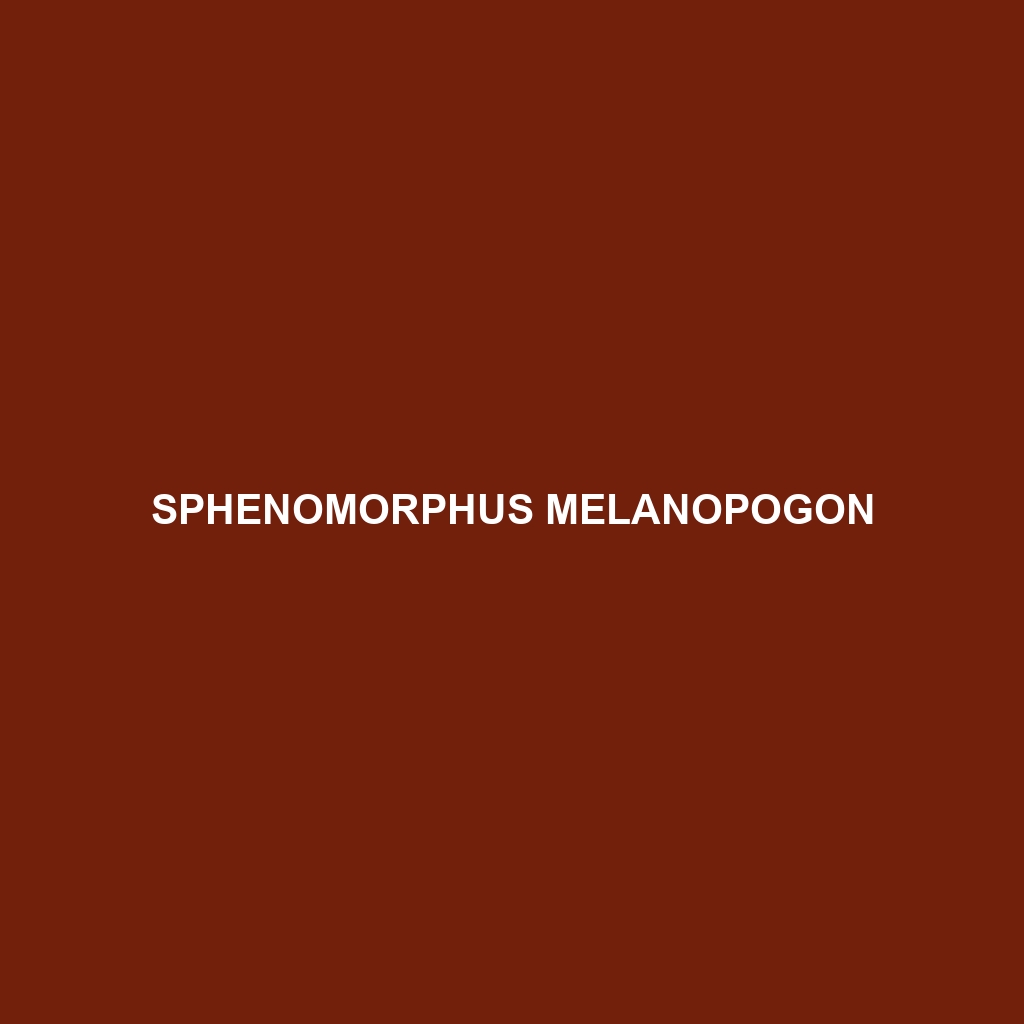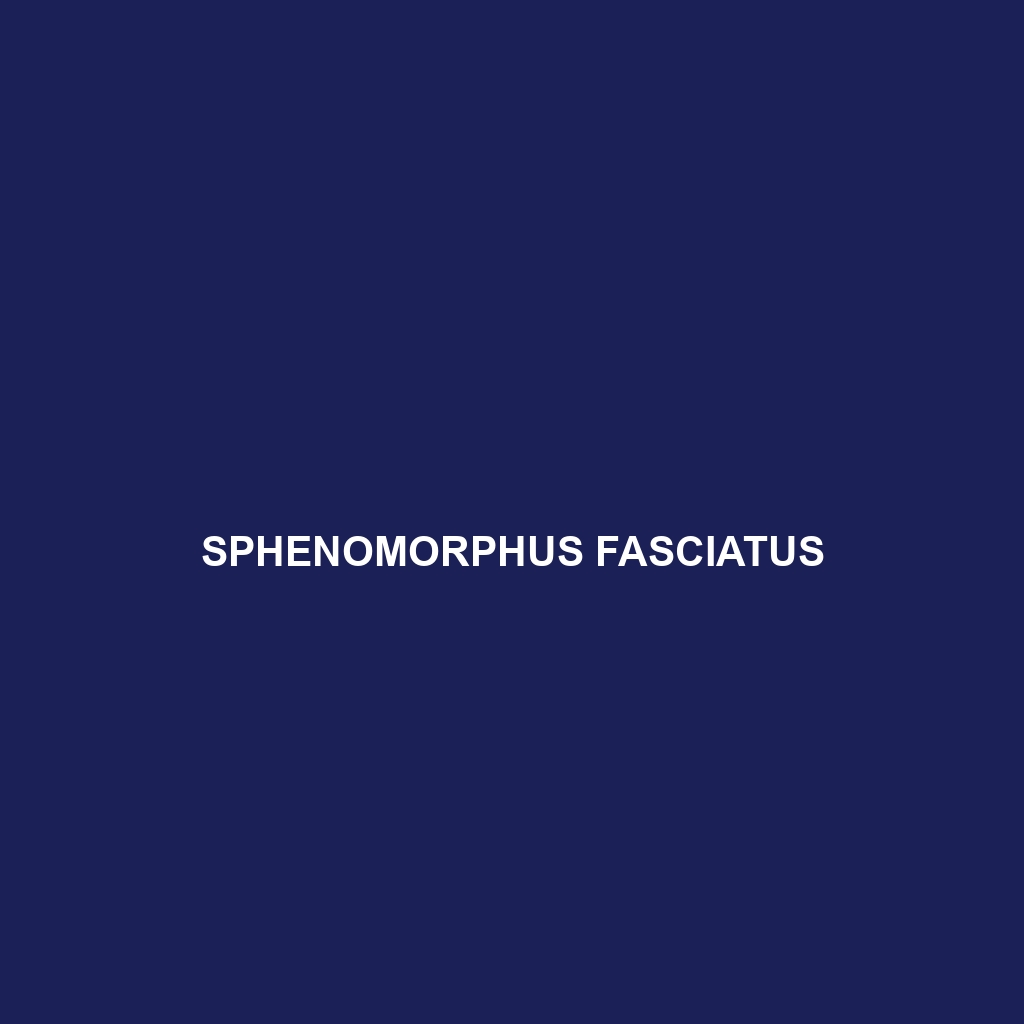Discover the stunning Sphenomorphus sanana, or Sanana skink, a vibrant insectivorous reptile found in the tropical rainforests of Southeast Asia. With its unique coloration, agile movements, and a vital role in ecosystem balance, this species showcases remarkable adaptations, including tail regeneration, essential for survival in its natural habitat.
Tag: insectivorous reptiles
Sphenomorphus mimikanus
<p>Discover the <b>Sphenomorphus mimikanus</b>, a strikingly vibrant lizard native to the tropical rainforests of Southeast Asia, characterized by its elongated body, nocturnal behavior, and insectivorous diet. This fascinating species plays a crucial role in its ecosystem by controlling insect populations and serving as a vital food source for larger predators.</p>
Sphenomorphus mimicus
Introducing the Sphenomorphus mimicus, commonly known as the mimic skink. This vibrant, insectivorous reptile thrives in tropical rainforests and is renowned for its exceptional camouflage abilities and unique mimicry behaviors, making it a fascinating species within its ecosystem.
Sphenomorphus melanopogon
<b>Sphenomorphus melanopogon</b>, known as the Black-bearded sphenomorphus, inhabits the humid tropical forests of Southeast Asia, thriving in rainforests and savannas. This slender, agile reptile exhibits cryptic coloration and robust climbing abilities, primarily feeding on insects while playing a vital role in maintaining ecosystem balance.
Sphenomorphus malaisei
<p><b>Sphenomorphus malaisei</b>, a medium-sized skink native to Southeast Asian rainforests, features a streamlined body measuring 15 to 25 cm and exhibits a rich brown to dark green coloration, aiding in its camouflage. This insectivorous species is known for its agility and unique defense mechanism of tail dropping when threatened, making it a crucial part of its ecosystem.</p>
Sphenomorphus maculicollus
<p><b>Sphenomorphus maculicollus</b>, or the spotted-necked skink, is a small to medium-sized insectivore found in the tropical rainforests of Southeast Asia, characterized by its olive-brown coloration and distinctive spotted neck. This agile species plays a vital role in its ecosystem by controlling insect populations and serves as prey for larger animals.</p>
Sphenomorphus jobiensis
<p><b>Sphenomorphus jobiensis</b>, commonly known as the Jobi skink, is a diurnal insectivore found primarily in the tropical rainforests of Papua New Guinea, characterized by its elongated body, vibrant coloration, and unique climbing abilities. This non-aggressive species plays a critical role in controlling insect populations while also being an essential part of its ecosystem's food web.</p>
Sphenomorphus helenae
<p><b>Sphenomorphus helenae</b>, commonly known as Helena's skink, is a diurnal omnivore found in the humid lowland rainforests of Southeast Asia. With an elongated, streamlined body measuring 20-25 cm, it exhibits stunning dark brown to greenish hues with lighter stripes, playing a crucial role in regulating insect populations within its ecosystem.</p>
Sphenomorphus forbesi
Discover the Sphenomorphus forbesi, or Forbes' skink, a slender, agile lizard found in the tropical rainforests of Southeast Asia. With a length of 15 to 20 cm, it showcases smooth scales in brown or greenish-brown hues, thriving in high humidity and playing a vital role in its ecosystem as both predator and prey.
Sphenomorphus fasciatus
Discover the fascinating Sphenomorphus fasciatus, a small skink native to Southeast Asia's tropical and temperate forests, featuring striking dark brown and olive green coloration with lighter stripes. This agile insectivore thrives in humid environments, plays a crucial role in controlling insect populations, and showcases unique behaviors during mating season.









